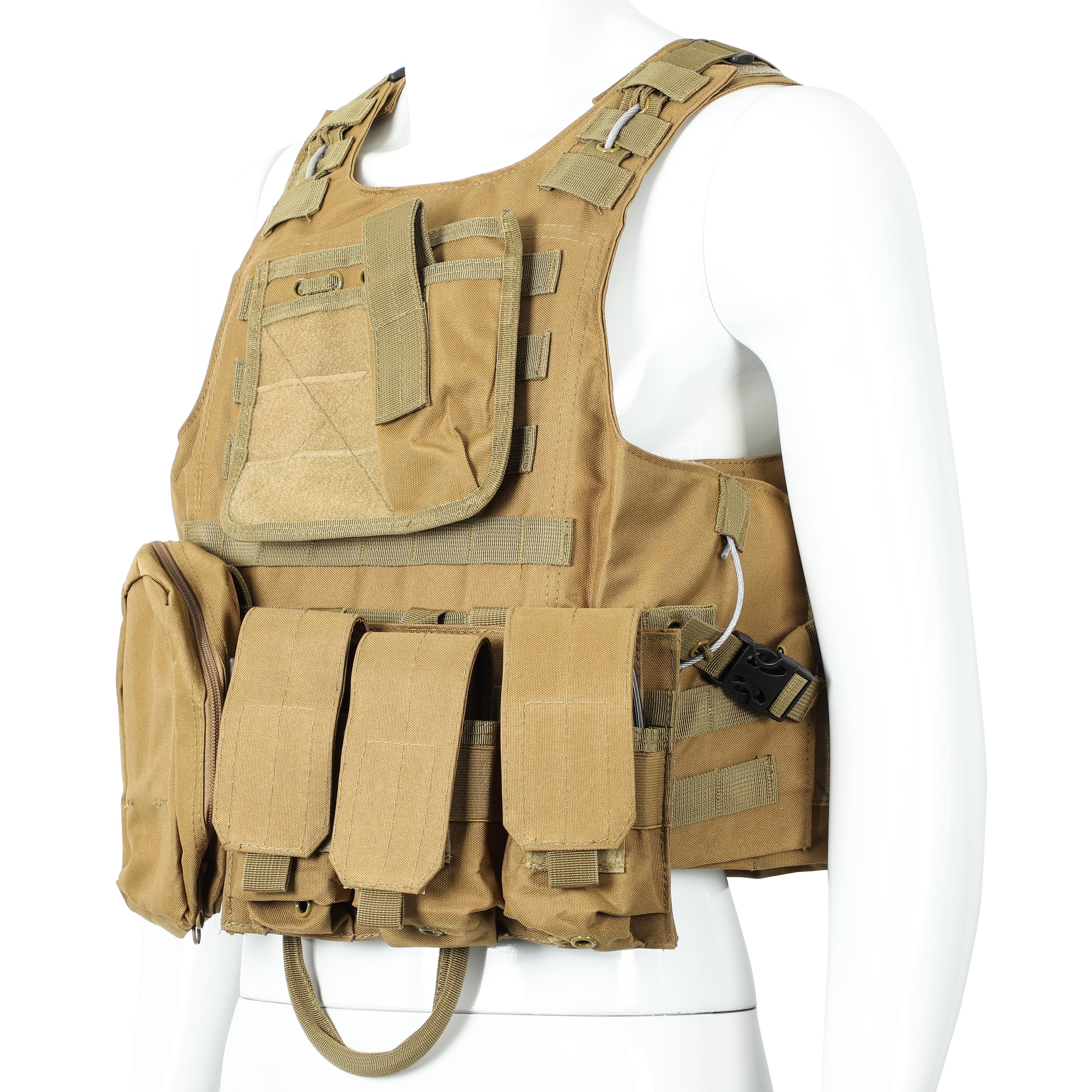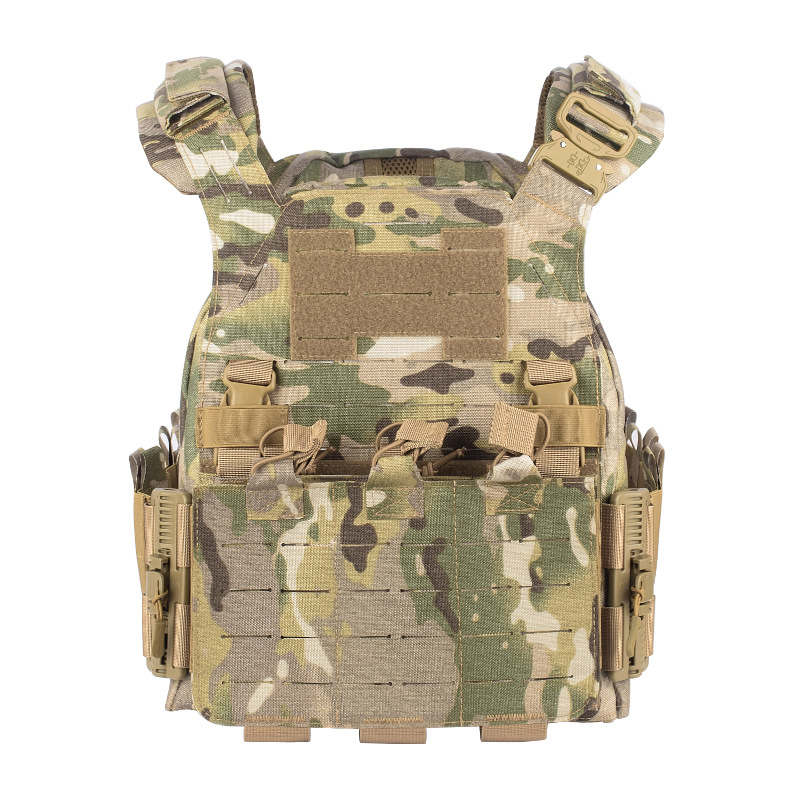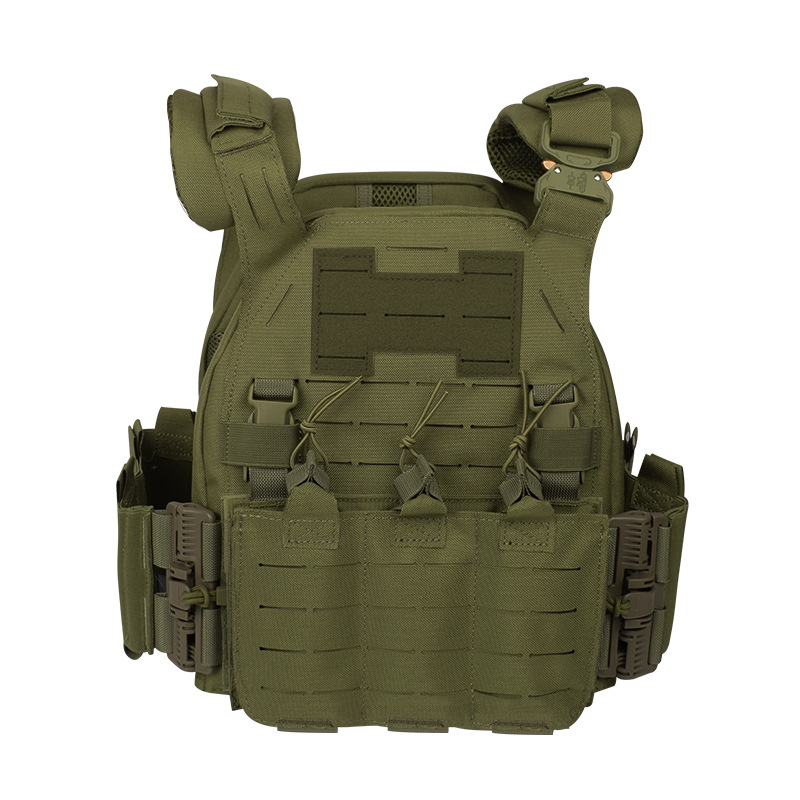1. Bulletproof inserts:

The second aspect is other bulletproof layers. The need for side and groin protection depends on the specific actions. For instance, European counter-terrorism forces prefer heavy full-protection tactical vests with helmets and bulletproof face shields for close-quarters armored combat. On the other hand, most special forces prioritize mobility and maneuverability, and their combat tactics emphasize frontal engagements. For such scenarios, lightweight tactical vests with front and back steel plates can fulfill most operational requirements. Especially for overseas missions or long-distance infiltration tasks where operatives must carry a significant amount of equipment, wearing heavy armor on top of all the gear presents practical difficulties. bulletproof layers. The need for side and groin protection depends on the specific actions. For instance, European counter-terrorism forces prefer heavy full-protection tactical vests with helmets and bulletproof face shields for close-quarters armored combat. On the other hand, most special forces prioritize mobility and maneuverability, and their combat tactics emphasize frontal engagements. For such scenarios, lightweight tactical vests with front and back steel plates can fulfill most operational requirements. bulletproof layers. The need for side and groin protection depends on the specific.
Lastly, quality matters. Inferior tactical vests may have weak bottom fixations for bulletproof panels, leading to easy detachment during long-distance movements. This aspect requires special attention, and the most reliable vests have double-layer protection, such as additional fixing straps at the bottom to prevent the bulletproof panels from easily detaching.

Some tactical vests, to save fabric and weight, may forego MOLLE webbing on the back or front, or even have extensive cut-outs for ventilation. While such vests can be suitable for basic conventional combat missions, they lack the versatility needed for high-intensity and specialized special operations. MOLLE webbing forms the basis for all tactical attachments. Different personnel with diverse specializations have unique needs. For example, EOD personnel require additional mounting options for detonators, disruptors, and breaching tools, while reconnaissance operatives need specialized surveillance equipment and listening devices. By combining magazine storage and weapon carry preferences, they can customize their tactical vests accordingly.
The second aspect is modular chest rigs. Most tactical vests come with three or four parallel pistol magazine pouches, which is sufficient in many situations. However, for snipers or heavy weapon operators carrying different-sized magazines, standard rifle magazine pouches may not be suitable. They need the option to attach a clean modular chest rig and equip it with the necessary pouches to meet their mission requirements. pistol magazine pouches, which is sufficient in many situations. However, for snipers or heavy weapon operators carrying different-sized magazines, standard rifle
The third aspect is the side waist connections. Typically, three or more MOLLE connection straps are enough to satisfy most load-bearing needs, such as attaching communication devices, additional magazine pouches, or inserting bulletproof plates. Some vests are more lightweight and have only one connection strap, making it challenging to add attachments on the sides. The choice between different options depends on the specific operational requirements.
The fourth aspect is the back panel. Having a MOLLE system on the back can already meet most attachment needs. For instance, it allows attaching grenade pouches, hanging a combat knife, carrying breaching tools, or directly connecting MOLLE backpacks. However, if the vest has zippers on both sides, it enables more convenient and secure attachment of a tactical backpack, facilitating better equipment carry.
Installing quick-release buckles on both sides of the waist allows for rapid removal, which has tactical value. In situations where entering extremely narrow spaces is necessary, the tactical vest may become an obstacle and requires immediate removal. While Velcro closures make loud noises and can be slow, quick-release buckles solve this problem. Similarly, during pursuit operations, wearing heavy body armor may hinder quick maneuvering, necessitating a swift removal to engage the target more effectively.

Shoulder quick-release buckles can be combined with the side buckles, enabling instant detachment. Such rapid removal is essential for extreme situations, like VBSS operations where operatives might have to jump into water and quickly evacuate, necessitating a quick release of their bulletproof vests for lightweight swimming. Or during a firefight retreat, if the tactical vest gets snagged, there might not be time to inspect the issue, and a direct pull on the quick-release buckle allows for a swift exit from the line of fire. bulletproof vests for lightweight swimming. Or during a firefight retreat, if the tactical vest gets snagged, there might not be time to inspect the issue.
Regarding equipment, there is never a fixed or mandatory way of using it. Equipment is inert, while people are dynamic, and ultimately, it depends on how people use it. Lightweight or heavy armor, chest rigs, etc., all have their respective applications, and combat scenarios are not like wargames with a hierarchy of disdain. The primary consideration should always be whether the equipment allows us to handle special situations, meets tactical needs, and allows us to complete the mission from start to finish. That's what makes good equipment.